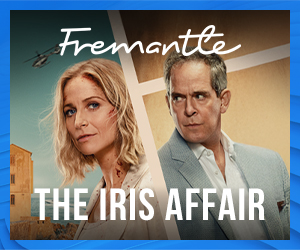
Oscar-nominated director, Smriti Mundhra, talks about tolerance, cultural nuance and change, reflecting the many facets of her Indian/American identity in her work, and greater access for female directors.
Smriti Mundhra’s "The Romantics", is an ode to Hindi cinema. The four-part Netflix docu-series explores the life and cinema of filmmaker Yash Chopra and Yash Raj Films, the studio he set up in Mumbai in 1970. But "The Romantics" is actually a journey into the story of Hindi cinema from just before partition in 1947 to current day India. From "Dharamputra" in 1961 to "Dilwale Dulhania Le Jaayenge" in 1995, the series offers an insight into an industry that has held its own against Hollywood for more than 100 years.
Your work ("A Suitable Girl", "Indian Matchmaking", "St Louis Superman") straddles many different worlds. Is it because of diversity intrinsic to you as an American-Indian? “My work reflects the many facets of my identity. I am an Indian. I spent a lot of time in India, so I have never felt like a foreigner there. But I am also a diaspora kid. Most of my upbringing was outside of India, in the U.S. So I have an outsider’s perspective on my culture as well. It is a different perspective on what it means to be a first-generation immigrant and child of the diaspora and having to navigate my identity in every space that I walk in. I am also an American. Raised in this country and the issues that shape my life here are also important to explore artistically. All my work reflects some aspect of that experience. It is a huge advantage. I can look at a story through multiple lenses.”
Is your lens American and then you bring the Indian in... “In non-fiction I see the world as an Indian first... I talked to a lot protagonists for Indian Matchmaking, many NRIs (Non-Resident Indians). When I talk to them and understand their thoughts, I feel very different, feel there is a layer to this whole topic that I understand differently from other NRIs. Because I have spent a lot of time in India, and I have witnessed arranged marriage in different forms and fashions. You cannot look at it just in terms of its...
Oscar-nominated director, Smriti Mundhra, talks about tolerance, cultural nuance and change, reflecting the many facets of her Indian/American identity in her work, and greater access for female directors.
Smriti Mundhra’s "The Romantics", is an ode to Hindi cinema. The four-part Netflix docu-series explores the life and cinema of filmmaker Yash Chopra and Yash Raj Films, the studio he set up in Mumbai in 1970. But "The Romantics" is actually a journey into the story of Hindi cinema from just before partition in 1947 to current day India. From "Dharamputra" in 1961 to "Dilwale Dulhania Le Jaayenge" in 1995, the series offers an insight into an industry that has held its own against Hollywood for more than 100 years.
Your work ("A Suitable Girl", "Indian Matchmaking", "St Louis Superman") straddles many different worlds. Is it because of diversity intrinsic to you as an American-Indian? “My work reflects the many facets of my identity. I am an Indian. I spent a lot of time in India, so I have never felt like a foreigner there. But I am also a diaspora kid. Most of my upbringing was outside of India, in the U.S. So I have an outsider’s perspective on my culture as well. It is a different perspective on what it means to be a first-generation immigrant and child of the diaspora and having to navigate my identity in every space that I walk in. I am also an American. Raised in this country and the issues that shape my life here are also important to explore artistically. All my work reflects some aspect of that experience. It is a huge advantage. I can look at a story through multiple lenses.”
Is your lens American and then you bring the Indian in... “In non-fiction I see the world as an Indian first... I talked to a lot protagonists for Indian Matchmaking, many NRIs (Non-Resident Indians). When I talk to them and understand their thoughts, I feel very different, feel there is a layer to this whole topic that I understand differently from other NRIs. Because I have spent a lot of time in India, and I have witnessed arranged marriage in different forms and fashions. You cannot look at it just in terms of its broadest strokes. There is a nuance, and that informs my work.
“I have more patience and tolerance for these institutions that definitely need evolving. But I have also grown up with my grandmother who married at 13 and what her life was... mother was married at 16, came to America, became an entrepreneur and the head of the household. Then there is me, who has lived a life beyond my grandmother’s wildest dream.
“I have seen that evolution in one lifetime. That level of cultural change doesn’t happen so easily. But it has happened.
“So when I hear people say that ‘oh arranged marriage is so regressive..’ and I say, yes, it is regressive, there is gender imbalance in the way everything is set up. And if you see it through everything I have seen through the eyes of people I have spent time with, homes I have spent time in, my family in India, you see aspects of this tradition that may seem more regressive on face [value], there is a reason behind it and there may even be a progressive reason behind it. My approach when it comes to my work is that we shouldn’t be too quick to judge. There are a lot of contours and nuance to these topics that you cannot capture in a tweet and you cannot see it if you are judging all the time.”
What was your professional epiphany? “The big turning point for me was when I took the leap to directing and also simultaneously took the leap into documentaries and non-fiction, I did that out of necessity because the industry in the West was very inhospitable to someone like me. The gender parity in Hollywood is atrocious. You do not see women directors at all. And it is not hospitable to the kind of stories I want to tell. Making my first documentary, A Suitable Girl (2017), was an opportunity for me to take my storytelling into my own hands. That pivot happened out of necessity but it awakened something for me that was really profound. One, I found my home, my calling in non-fiction storytelling. Two, I found my voice as a storyteller/director. I took seven years to make my first film. I went into it pre-OTT. When I came out of it, the industry had radically changed. Content was going global, non-fiction storytelling was on the rise and OTTs were growing. So I found a lot of opportunity in the years after my first film released. The market met me where I wanted to be. Indian Matchmaking was a huge turning point for me.”
What is the issue with female directors in the U.S.? “Fewer than 2% of all studio directing opportunities – TV, films, web – are directed by women. That is an absolutely mind-numbing statistic to me. I know women are particularly better equipped to be directors – it needs leadership, organisation and sensitivity to material. But non-fiction is different. In the last few years, non-fiction has started emerging as a real viable alternative. The barriers to entry are low with non-fiction, therefore you see more female directors. It is all about access. It is not that we can’t compete at that level, but it is that there is some force that keeps us out and when that force is not there, we thrive.” – by Vanita Kohli-Khandekar





























